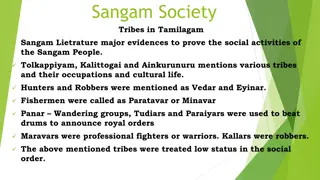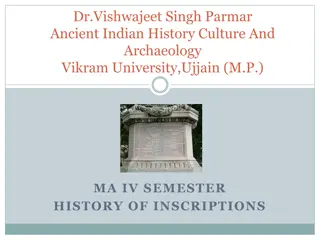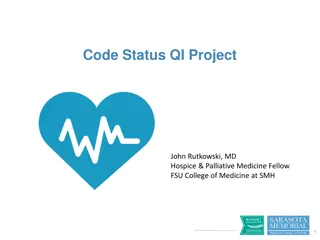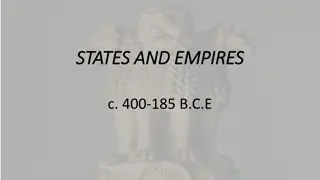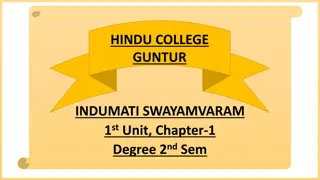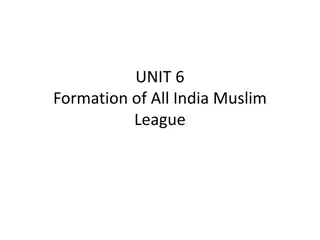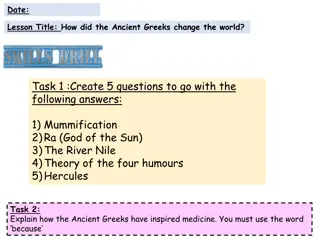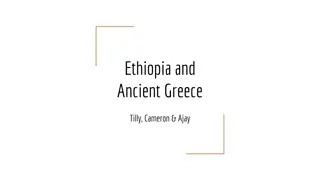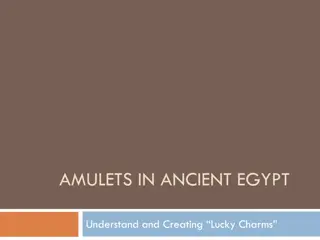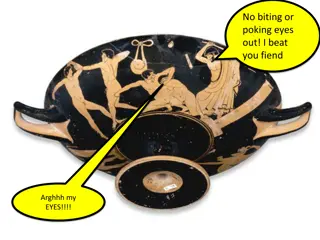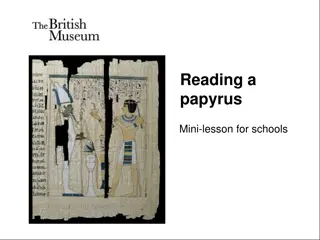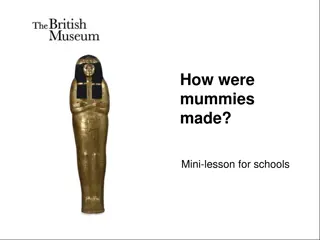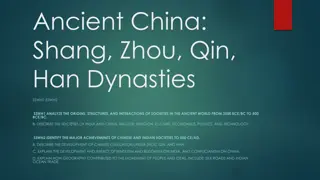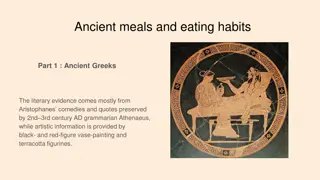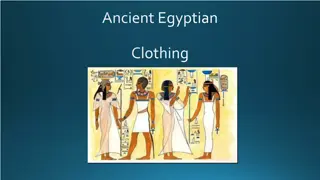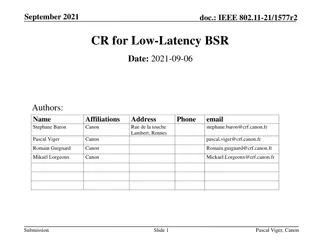The Status of Ganikas in Ancient India: A Closer Look at Courtesans
Courtesans known as Ganikas in ancient India held a prestigious position distinct from common prostitutes, akin to Greek hetaerae. Exploring their role and significance in society sheds light on their intellectual and social contributions beyond mere companionship. The comparison between Ganikas and Vesyas, along with references to the Kama Sutra's depiction of these highly accomplished women, highlights their elevated status and respect within the historical context.
Download Presentation

Please find below an Image/Link to download the presentation.
The content on the website is provided AS IS for your information and personal use only. It may not be sold, licensed, or shared on other websites without obtaining consent from the author. Download presentation by click this link. If you encounter any issues during the download, it is possible that the publisher has removed the file from their server.
E N D
Presentation Transcript
Ganika Too Unusual for a Naika?
The status of the GanikAs in ancient India One may note at the very beginning that a ganika is not a common prostitute. They are better understood as courtesans. According to Y. B. Singh, The Courtesans (ganik -s) were not like the ordinary prostitutes. associated with the flesh trade alone. Their status appears to be similar to those of the hetaerae of Greece. (Singh, 181) They cannot be
Hetaera The hetaera or hetaira (pronounced hee-tee-a- ra ) were apparently distinguished in ancient Greece from the pornai. The pornai were common prostitutes who served a large number of clients indiscriminately. Etymologically, the word pornai comes from pernemi (to sell). The hetaira, on the other hand, served only a chosen few. They provided intellectual stimulation besides carnal pleasure. companionship and
Ganika versus Vesya In India, the ganik -s performed a similar function. They are needed to be distinguished from the ve y -s. In the Amarakosha, the ancient Indian thesaurus in Sanskrit, ve y and ganik are used interchangeably. But other works, like the commentaries of distinction between them. A ganik is considered to be superior to a ve y . Medh tithi, make
In order to understand why the Ganiks were superior to common prostitutes, one must turn to an all time classic: Mallanaga Vatsyayana s
Kama Sutra (ca. 200 CE 400 CE)
The Sixty Four Arts Vatsyayana mentions that a woman should study the sixty four arts along with the kama Shastra. He adds: A public woman, endowed with a good disposition, beauty and other winning qualities, and also versed in the above arts, obtains the name of a Ganika, or public woman of high quality, and receives a seat of honour in an assemblage of men. She is, moreover, always respected by the king, and praised by learned men, and her favour being sought for by all, she becomes an object of universal regard. (Chapter III; translated by Sir Richard Burton)
A Ganika was thus a highly Accomplished courtesan. She moreover commanded a certain respect in Ancient Indian society.
Social Status of the Ganikas The ganik s enjoyed a privileged status in society. Jivaka, the famous physician, was the son of a ganik named S lavati (the rival of mbap li). (Singh,184) He is often referred to in ancient texts as Ganikaputra (the son of a ganik ). The stigma attached to his birth did not jeopardize his career and reputation in anyway. The sons of ganik s were thus not always discriminated against. Y. B. Singh informs that in the Gupta period the ganik s were even allowed to display their own dhvaja (flag). They could choose whom to consort with, and charged very high fees, as much as 500 gold coins, for their service.
Social Status of the Ganikas Aditi Singh, however, feels that the general attitude towards the ganika-s was ambivalent. While they were sought after as talented individuals, they were also condemned for their profession. Notably, in Mrcchakatika, Vasantasen marries C rudatta in the end. Singh reflects, The virtuous woman, of true character could not have been left as the courtesan in the play and had to be transformed as the lawful wife, for virtuousness was not the forte of the courtesan but of the wife. (Singh, 104)
The Origin of the ganikas Historians believe that developed out of Indo-Greek contact. The Vedic texts do not speak about the ganik s. The first text to mention organized prostitution in ancient India is Kautilya s Artha stra (ca. 2ndcentury BCE). But this work does not refer to the exalted status of the ganik -s. The earliest work where a ganik is assigned a high status is Mah vagga (uncertain date) which tells the tale of the famous ganik mbap li who worshipped Buddha. the culture ganik
The Origin of the Ganikas It appears that the ganik s received their exalted social status in the golden age of the imperial Guptas (ca. 240 50 C.E.). Texts like Sudrakas Mrcchakatika, Isvaradatta s Vita-Samvada, and Ubhayabhisarika of Vararuci describe the ganik s. According to Aditi Singh, The courtesans were significant in the courtly life where their lives are mentioned as being inseparable from the life of the king. (Singh, 102) Dhurta-
In Ntyastra Bharata describes four types of heroines: 1.Celestial ones 2.Queen 3.Lady of nobility 4.Courtesan
In Ntyastra The courtesans were supposed to have the following characteristics: 1.Light-heartedness 2.Exaltedness 3.Expertise in dance, music and other arts.
Conclusion Sudraka s choice of Vasantasen as his heroine was therefore not at Moreover, Vasantasen s accomplishments and refined temper should not appear as a surprise to us. She is gun nurakt (lover of virtue), as opposed to dhananurakt (lover of wealth). Vatsyayana too advises the ganik s, those who are possessed of excellent qualities are to be resorted to for the sake of love, and fame. (Part Vi, Chapter I) all unconventional.
Reading list Singh, Aditi. Women s World: Artistes, Courtesans and Wives in Early India , Proceedings of the Indian History Congress, vol. 75 (2014): 99 106. Y. B. Singh. Roots of the Ganika Culture of Early India , Annals of the Bhandarkar Oriental Research Institute, vol. 74, no. 1/44 (1993): 181 190) Vatsyayana, Mallanaga. Kama Sutra of Vatsyayana, trans. Sir Richard Burton, 1883. http://www.sacred- texts.com/sex/kama/
Prepared By Dr Ayusman Chakraborty Assistant Professor Department of English Taki Government College


